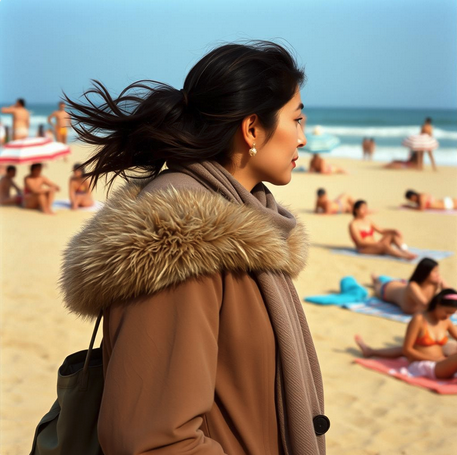No one wants to spend any more time at the TSA security checkpoint than they have to. That’s why we’ve given so much advice about that very thing over the years:
- How to get through the checkpoint easily and quickly
- How to help avoid getting a false positive on TSA swab tests
- How to find the shortest TSA queue
- Easy hack to skip the longest TSA lines
- 6 things that can get your luggage flagged by the TSA
That last one is particularly important. TSA officers are looking for particular things in our luggage that could be used as a threat. That’s why they maintain a list of what you can and can’t bring in your carry-on and personal bags (and checked luggage, too!).
However, it’s more than just what you bring. It’s also your demeanor. How you act. As part of their training*, TSA officers are taught to look for certain behaviors that could potentially make you appear suspicious. Stuff that would make you stand out as a typical passenger. Here are some of them:
Wearing baggy clothes
Many people try their best to be comfortable on a plane. That’s especially true if they have a really long flight in front of them. But baggy clothes can make TSA officers wary that you may be trying to hide something – that super large hoodie may earn you a pat down. Here’s more info about it.
Wearing unseasonable outfits

I know planes are kept cold (here’s why), but wearing a parka and ski pants in the middle of summer would still be considered suspicious. Just like wondering what might be under that hoodie, TSA officers might want to do a further inspection to make sure you don’t have anything dangerous under that parka.
Appearing intoxicated
If you’re acting as if you may have been drinking too much, you may be detained while the TSA officer asks the police to do a blood alcohol test on you. What happens after that will be determined by what your score is. After all, remember what happened to this lady.
Acting aggressively

In the past few years, we’ve seen enough TikTok videos to know that someone who is aggressive could be a potential danger on any plane.
Obviously, someone who is acting aggressively – belligerent, angry, nasty, etc. – is going to be a red flag for TSA officers.
Acting nervous
Someone who has plans to do something bad to an airport, a plane, etc., may appear nervous.
Fidgeting, swaying/rocking, cracking your knuckles, biting your nails, clearing your throat, talking too much, appearing pale or red, or wide eyed can all be signs of anxiousness or nervousness, and TSA officers may want to see if you look that way because you’re scared to fly, or have nefarious plans of some sort.
Avoiding eye contact
For some of us, it’s a behavior that’s been going on for as long as we can remember. Got something to hide? Avoid eye contact.
Carrying lots of cash

If you have a lot of cash on you, especially if it’s in foreign currency, you may get flagged by a TSA officer. They’re concerned about sex trafficking, so they may want to ask you some questions.
*Note: In 2015, The Intercept posted a list of “TSA’s secret behavior checklist to spot terrorists.” It was called the “SPOT Referral Report” (SPOT stood for Screening of Passengers by Observation Techniques). The name of the SPOT program was changed to the BDA (Behavior Detection and Analysis). The program was meant to identify potential terrorists among people at an airport by a set of 94 objective criteria, all of which are signs of stress, fear, or deception. Passengers who met enough of the criteria were, under the program, referred for a patdown and additional screening.
Both SPOT and BDA have been denounced due to, among other things, it was pseudoscience, ineffective, and TSA officers were using it in conjunction with racial profiling.
The program has since gotten less funding but, at least as of 2022, appears to still be an active part of the TSA.
Feature Image: TSA
Want to comment on this post? Great! Read this first to help ensure it gets approved.
Want to sponsor a post, write something for Your Mileage May Vary, or put ads on our site? Click here for more info.
Like this post? Please share it! We have plenty more just like it and would love it if you decided to hang around and sign up to get emailed notifications of when we post.
Whether you’ve read our articles before or this is the first time you’re stopping by, we’re really glad you’re here and hope you come back to visit again!
This post first appeared on Your Mileage May Vary
